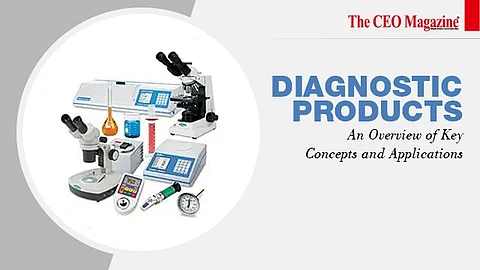

Diagnostic Products
Diagnostic products are medical tools and tests that help healthcare professionals diagnose and monitor diseases, conditions, and infections. These products encompass various technologies, from simple blood glucose meters to sophisticated genetic tests.
This article will provide an overview of the key concepts and applications related to diagnostic products, including types of tests, common technologies, and future directions.
Diagnostic products are available for various medical purposes, from identifying infectious agents to monitoring chronic diseases. Some of the most common types of tests include:
Imaging tests: These tests use non-invasive techniques, such as X-rays, CT scans, and MRI, to create body images that can help detect structural abnormalities and diseases.
Laboratory tests: These tests analyse bodily fluids, such as blood, urine, and saliva, for markers of disease or infection. Examples of laboratory tests include blood glucose tests, cholesterol tests, and tests for infectious agents such as HIV and hepatitis.
Genetic tests: These tests analyse DNA or RNA to identify genetic mutations or predispositions to certain diseases. Genetic tests can help diagnose inherited conditions and guide treatment decisions.
Point-of-care tests: These tests provide results quickly and can be performed at the point of care, such as at a doctor's office or a pharmacy. Examples of point-of-care tests include rapid strep tests and home pregnancy tests.
Diagnostic products rely on various technologies, from traditional laboratory methods to cutting-edge molecular and genetic techniques. Some of the most common technologies include:
Enzyme-linked immunosorbent assays (ELISA): This laboratory technique uses antibodies to detect the presence of a specific protein or substance in a sample.
Polymerase chain reaction (PCR): This technique amplifies DNA or RNA from a sample, making detecting small amounts of genetic material possible.
Next-generation sequencing (NGS): This technology can rapidly sequence large amounts of DNA, allowing for the identification of genetic mutations and variations.
Microarrays: These devices use small probes to detect the presence of specific nucleic acids or proteins in a sample.
The field of diagnostic products is constantly evolving, with new technologies and approaches being developed to improve the accuracy and speed of testing. Some of the key areas of innovation in diagnostic products include:
Artificial intelligence (AI): AI algorithms can help interpret medical images and analyse large amounts of data to identify patterns and trends.
Miniaturisation: Advances in microfabrication and nanotechnology enable the development of portable, low-cost diagnostic devices that can be used in resource-limited settings.
Digital health: Integrating diagnostic products with digital health technologies, such as telemedicine and mobile health apps, creates new opportunities for remote monitoring and personalised care.
Precision medicine: Using genetic and molecular information to tailor treatments to individual patients is driving the development of new diagnostic products that can help identify the most effective therapies.
Diagnostic products are essential tools for diagnosing and treating diseases and conditions. From simple blood tests to advanced genetic sequencing, diagnostic products are vital in delivering personalised, effective healthcare.
As new technologies and approaches continue to emerge, the field of diagnostic products is poised to make even greater strides in improving patient outcomes and enhancing the quality of care.
Follow us on Google News
